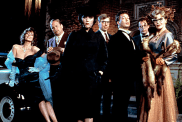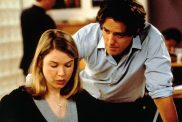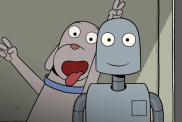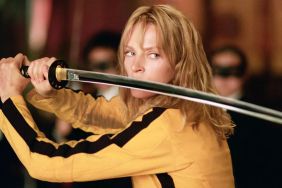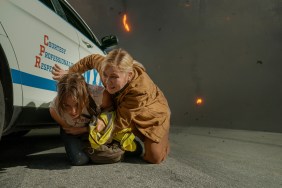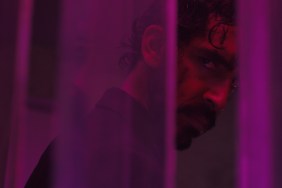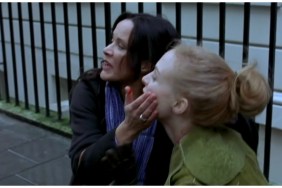
When the title for Andrew Dominik’s Cogan’s Trade was changed to Killing Them Softly there was a collective groan from the masses that were hotly anticipating its release. It seemed like a move from a “cool” and mysterious title to something more generic and audience friendly. It’s not. It’s right on the nose. A perfect title for an excellent film that wasn’t anything like what I expected.
Adapted from George V. Higgins’s novel, this is a gangster film with guns, bloodshed, a heist and consequences, but it also serves as a metaphor for the whole of America — from the top down. A commentary that isn’t at all subtle, and not in a bad way. Ironically enough, the violent nature of this film, with its equal moments of beauty and savagery actually make for a perfect comparison.
Set in 2008, amidst the financial crisis and the Presidential election, Killing Them Softly begins with a pair of hoods (Scoot McNairy and Ben Mendelsohn) holding up a high stakes, mob-protected poker game under the presumption they can get away free. The reason being, Markie Trattman (Ray Liotta), the guy overseeing the game, actually robbed his own game years earlier, later outted himself, but enough time had passed and it was laughed off and he was forgiven. However, if it happened a second time, the assumption is everyone would suspect he was behind it.
Well, it happened, and while no one necessarily believes Markie would be stupid enough to hold up his own game for a second time, someone has to pay. Enter Jackie Cogan (Brad Pitt), a mob enforcer asked in to clean up the situation.
With so much uncertainty, no one feels safe, who can be trusted? How can we get the money flowing again? Markie didn’t do it, but to rebuild confidence the blame has to fall somewhere and fast, even if the true culprits are eventually sniffed out. As one character says, “I get it, the public angle and all.”
This is only one of many economical and political comparisons made in a film chock full of them. To help him along the way, Jackie calls in a once-reliable peer in Mickey (James Gandolfini), but what arrives is nothing like the Mickey he knew two years ago. Downtrodden after being in and out of jail and struggling to keep his marriage alive, Mickey is a drunk, lazy man that has seemingly lost all will and motivation.
To be blunt, Mickey, to me, represents a swath of American society, whether they have been beaten down by the government, left to struggle due to the recession or have simply given up. Mickey is a guy that will do the job he’s been asked, but only in due time and not to the quality he’s turned out before.
As Gandolfini’s large frame settles into a seat with a heavy sigh, accompanying grunt, a drink in his hand and his hired sex walking out the front door you realize just how ugly it is when people give in to creature comforts, give up on life and start feeling sorry for themselves.
Throughout the film, Barrack Obama and George Bush are heard through televisions and radios, one stumping to become the next President of the United States the other giving reasons as to why the 2008 bailout was necessary. Their words play in line with the film, elevating the content, creating a connection. Sometimes it begins to be a bit too much, but it’s essential to the beginning and a slam dunk in the end.
From a filmmaking perspective there is hardly a misstep and Dominik and cinematographer Greig Fraser are absolute wizards when it comes to the film’s visual style. Fraser also proves he may be the one man you want on your side if you’re going to shoot a car crash scene as he one ups the turned over, smashing of metal he delivered in Let Me In.
Here we see an assassination presented 100% in slow motion. Broken glass flies at the screen, blood sprays and a three car pile up is just as innovative here as was the wreck in Let Me In. The whole scene is absolute magic, beginning with blurred brake lights on dark and rainy streets before the window rolls down and the first shot is fired using what almost looks like macro-photography. If an assassination can be described as beautiful, in this case there is no other word.
Dolly zooms, a fevered heroin high, shotgun blasts and the unflinching eye of the camera as one man is beaten nearly to death and left to soak on the street in the rain — jaw, ribs and teeth broken. Killing Them Softly uses violence and art to paint a metaphor. Sometimes you have to bust a few heads to get things moving again, even if the heads on the chopping block aren’t necessarily the heads that most deserve chopping. But when it comes to that aspect of the story, even the caliber of weapon and the deafening sounds of the shots fired imply more than just a “cool” factor.
I don’t traditionally watch a movie and wonder why a shotgun, hand gun or machine gun or otherwise are used. Most of the time the shots all sound the same and they serve their purpose — to dole out death. Yet, here, shots are fired in silence, others with loud booms and then others muted by comparison. The victims all carrying different weight and once put to an end they’re either tagged and pushed away or forgotten entirely. In most cases I don’t see meaning in this, here it’s something to consider.
The performances are also right on target. I’ve said little about Scoot McNairy (Monsters) and Ben Mendelsohn (Animal Kingdom) to this point, but both knock it out of the park from early scenes of well-written dialogue to their later individual panic and, in Mendelsohn’s case, personal decay.
Ray Liotta takes his licks, Gandolfini is the sad sack I’ve already described, Richard Jenkins is Pitt’s go-between and together those two tell most of the story up until Pitt hammers home the film’s final line.
